Utlizing ‘AI’ Artificial Intelligence Software in the Hospitality Industry
Have you ever wanted more time and more help in your...

Last month I walked you through the estimating, marketing and legal sides of hiring yourself out to bartend private events. I also offered a lot of suggestions dealing with how to add value to your events or your company. This month, I’m going to walk you through the operational side of planning and working these parties so that hopefully you’ll feel confident enough to land a few gigs on your own and you’ll be able to spend your time at the event putting great drinks in people’s hands, big smiles on their faces and plenty of Benjamins in your pocket.
How to Plan for A Private Party
This is where I earn my salary. Probably the hardest part of being a for-hire bartender is planning. How do you determine the amount of product to order for a party filled with people you don’t know, at a location you’ve probably never been to, for an event whose purpose you probably don’t know the first thing about? Interview whoever is hiring you. Find out the answers to the following and it will reveal of lot of important planning data.
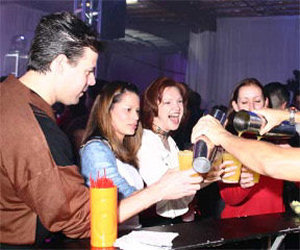 What To Do When You Can’t Get Good Intel
What To Do When You Can’t Get Good Intel
It will happen. The person hiring you has been hired by a PR firm who was hired by a subsidiary of the company who is producing the event in conjunction with the other company that is producing the event. And finding out even the simplest information to plan for the party is like trying to get blood from a stone. You’ll just get a bunch of “I don’t knows” or “I’ll try to find out for yous.” So what do you do? Be honest and straightforward. Tell the client you can’t accurately plan service for an unknown number of people attending an event that you know little to nothing about for an undetermined amount of time. So suggest that you will provide X, Y, and Z services for this many hours at this time and if you run out of product, you run out. This might sound like a bit of a loose cannon approach, it’s not. It’s a smart approach. The mistake would be to try and assure your client that you can properly plan for the event without the necessary background, and then you end up either tragically understaffed and undersupplied or equally embarrassing… you leave your client with a few thousand dollars in unused booze and fruit juice or billing them for ten bartenders when you only needed two. Don’t expect any return business from that unhappy executive. So instead, when you’re being asked to walk into an event blind, just be pragmatic about it. Make it clear, you are walking into this event blind and so plan for a finite set of details that you determine, and make sure the client understands exactly what you will be doing. This way there are no unmet expectations. If they know you are probably going to run out of product after two hours or that you are going to run a Martini and Cigar bar, the pressure if off of you to plan for the impossible.
The Wedding Mentality
Before you decide which product to suggest for the order, you must slip into the shoes of the people attending the event. More times than not, you will be catering an event, much like the dozens and dozens of other events all these people have been to in their careers. You’ve probably been to a few yourself. No matter what the event, you can usually boil it down to a reception held in a hotel banquet room or under a tent somewhere, with a buffet and a portable bar with a less-than-impressive stock of spirits.
So I just know you’re itching to show how much better your company is, by providing a mind-blowing pantry of product with seven different single-malts, six premium plato tequilas, eleven flavored vodkas, and every liqueur known to man. You envision people exchanging witty banter as they delicately sip on Pink Ladys and Pimm’s Cups. You can hear the accolades flowing your way as everybody raves about your Bloody Caesars, Mojitos, Colorado Bulldogs, and Tatongas. Not gonna happen. Say it out loud with me… “NOT GONNA HAPPEN.”
People who attend private parties have been conditioned to have what I refer to as the “Wedding Mentality.” They won’t even look at the bar or any menus your print, even if you put one of every single table in the joint. I have had HUGE poster-sized menus printed as well as large menus sitting right on top of the bar… on both sides of it and still people don’t read it or see it. They are conditioned to expect a typical wedding reception bar: Well or Call Vodka, Gin, Rum, Bourbon, Rye, Scotch and maybe, just maybe… Tequila. If you’re serving beer and wine, they’ll expect one domestic and one import beer, one red and one white wine. That’s it. And 9 out of 10 of your guests will order from this selection, regardless of what you have behind that bar. So you will be knee-deep in vodka-sodas, gin & tonics, scotch and waters, rum and cokes, etc. Believe it.
With this in mind, you are left with three simple strategies: go with the flow, step it up a notch, or fight the power. I will walk you through all three. (Would you have expected any less? )
Go With The Flow
Don’t kill yourself for no reason. Just accept that you’re fighting an uphill battle trying to retrain 500 people what to order at one two-hour cocktail party, and provide them with what they expect: the basics. Just do it better than anybody else. Make better Cosmos and Dirty Martinis than anybody else in town. Make more delicious Long Islands and Kamikazes. And focus on the flair. That’s how you’ll stand out from the rest and the reason you were probably hired in the first place. Face it: a gin and tonic… is a gin and tonic. Even if you do make your own ice cubes from distilled water, import hybrid limes from the West Indies, and serve the finest selection of gins the Queen herself could offer… nobody but you is going to notice at these events. So put your energies into service and Flair. The strategy here is to serve from the smallest possible inventory imaginable, and still meet the typical guest’s expectations. In the United States, this can be accomplished with just the following spirits and liqueurs:
Spirits: Vodka, Gin, White Rum, Gold Tequila, Bourbon, and Scotch.
Liqueurs: Triple Sec
Mixers: Lime Cordial/Sweetened Lime Juice, Sweet and Sour Mix, OJ, Cranberry Juice, Tonic Water, Club Soda, Cola, Diet Cola, Lemon-Lime Soda, Water
Garnishes: Limes, Lemons, Olives, Cherries
From this pale pantry, you can create many of the top 20 most popular drinks and cocktails in the world including Cosmopolitans, Margaritas, Daiquiris, and LITs.
Step It Up a Notch
By adding just a few more items to your arsenal, you can offer guests dozens more interesting, more tantalizing concoctions without wasting hundreds of dollars or loading and unloading cases of product. Here’s what I would add, to “Step it Up a Notch”:
Spirits: Captain Morgan’s Spiced Rum, Coconut Rum, Vanilla Vodka, Raspberry Vodka
Liqueurs: Apple Pucker, Peach Schnapps, Raspberry Liqueur, Sweet Vermouth, Amaretto, Kahlua
Mixers: Half and Half, Grenadine, Grapefruit Juice, Pineapple Juice, Mango Puree or Nectar, Sugar or Simple Syrup (aka Bar Syrup, Rock Candy Syrup, Gomme Syrup)
Garnishes: Oranges, Pineapples
The key here is to bring a very small selection of these extra items. You’re not trying to offer such items for everyone at the party. Instead, you’re preparing for those people who ask for something a little unusual or extra, or to impress people you know will appreciate it. You now have the ability to create a few drinks that will wow your guests without having to put a ton of extra prep, promotion, ordering, or cash behind a specialty program. Just offering Mango Margaritas, for example, can be enough to make your work memorable.
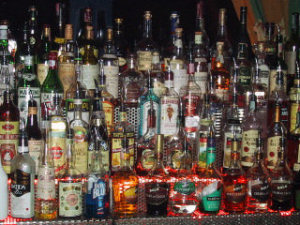 Fight The Power
Fight The Power
Ok, so let’s assume for a second you’re stubborn (and ambitious) like me. You’re not a “go with the flow” kind of bartender. You don’t “step it up a notch;” you step it up a dozen notches in everything you do. You like to make a splash, walk your own path, do your own thing. I get it. I really get it. My suggestion to you is to sell the client on providing a specialty bar and that all you will serve from that bar, is …. whatever you want, lol. No seriously, pick whatever cocktail or cocktails or other central theme you are passionate about and sell that. I do tons of Mojito and Margarita bars. You can explore Martini Bars, Rum Bars, Bloody Mary Bars: you name it, you can do it… if you can sell it. And the beauty of this approach is you only have to worry about a very finite product line (and manageable order) and you can instead focus your drink-making energies on being truly creative. If you’re smart about it, you also realize that you can pick your bottles to flip with, thus making your flair improve at the same time your drink quality does.
The real trick here is to stage and dress your bar so it is crystal clear that this is not an ordinary bar. And of course, you need to have the client provide a “normal” bar somewhere else. You will need one or some of the following to achieve this: huge signs (aka “Margarita Bar!” or “Cocktails Only!”), table tents everywhere, posters, costumes or other clear visual cues to guests like strategic product placement (surround your setup with nothing but limes and Tequila to let guests know you are running a Margarita Bar). If you skip this step, expect to be as frustrated as your guests by the endless orders they give you for drinks your bar cannot serve.
You can also try to bring a fully-stocked bar with the same type of selection a pub, lounge, or restaurant bar would offer. And there is a firm or two out there that does this with great success. They also have liquor licenses and gigantic operational budgets and quite a revenue stream. To do this on your own, is ambitious to be modest. I would go so far as to say it’s a bit foolish. But then again, so am I at times, or so I’ve been told. (It’s a fine line between genius and insanity.) This approach will also require a back bar to display your impressive stock.
 Setting Up Your Bar
Setting Up Your Bar
Hopefully you’ve arrived early enough and secured your little patch of real estate for the evening in a well-lit area with bar mats or thick carpeting, away from chandeliers, plate glass windows, and yet very central to the rest of the entertainment for the evening. Follow these suggestions and you’ll be in great shape:
1. Stantion off your working space. If you don’t, clueless guests and banquet workers will walk right behind you or right up to you to talk to you… while you’re flipping bottles. Yes, people are this stupid, lol. So don’t give them the option.
2. Dress up your back bar. Use a linen and skirt and store all your supplies, bags, and back-up product (ice, cups, liquor, fruit, mixers, beer, wine, water, etc.) underneath it, out of sight.
3. Set up a cleaning station for your tins. I have two small tupperware containers on my back bar. The first is a dump sink, the second is half-filled with warm water and is a wash/rinse sink. Then I have a few thick towels that I dry tins on. This allows me to always have clean, dry fresh tins to play and pour with, without a lot of down time. Also keep one or two small garbage cans under your Flairco portable bar, out of guests’ sight, but close to you. You’ll need it.
4. Give guests somewhere to unload. Position a couple tray-jacks and/or garbage cans close to your bar but on the guests’ side, so they can get rid of empties and trash. Otherwise they will put them on your bar, and yes, they will actually reach around and put their garbage on your under-bar. It never ceases to amaze me the things people think they can do at a party.
5. Modify your Flairco Bar. I use a deep bus tub with holes drilled in it for my ice. The holes allow water to drain so the ice stays fresh and dry. Under my bar, I put another bus tub, to catch the water. This bottom tub also doubles as a dump bucket, if/when needed. If you don’t drain your ice, it will be ice water in no time.
6. Set up your well. I’m not going there, lol. Every bartender has to develop a setup that works for them and my way may not suit you. But I will say this: keep your inventory small and simple, keep back-ups close at hand, and keep your bar clean and tidy throughout the entire event. A sloppy bar is a sure sign of a bad bartender. Yeah, I said it and I meant it.
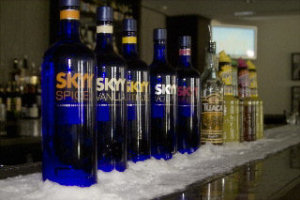 7. Display your inventory. Space is probably tight, so often a back bar will have to do. You can kill two birds with one stone by stocking your back-ups in neat rows on the back bar. Of course, if there’s room, put the brands you are offering (spirits, beer, wine) on the front bar. This will save a lot of time and headaches for everybody.
7. Display your inventory. Space is probably tight, so often a back bar will have to do. You can kill two birds with one stone by stocking your back-ups in neat rows on the back bar. Of course, if there’s room, put the brands you are offering (spirits, beer, wine) on the front bar. This will save a lot of time and headaches for everybody.
8. Inspect your setup. After you have set up the bar, walk around it and look at it from the guest point of view, from all angles. It should look as tidy, organized, and pleasing as it is functional
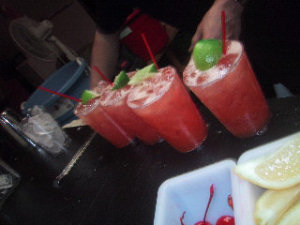 Staffing and Service
Staffing and Service
When you’ve been hired to provide flair bartending services, it can be a slippery slope. You want to blow everybody away with as much Flair as you can muster but of course, you have to provide superior service, which at banquets and other special events, can be very taxing. Often everybody arrives at once, and occasionally you will find yourself in the weeds… sometimes all night long. Of course, your talent and experience as both a flair bartender and a speed bartender will play a big role in how well you deliver both volume and quality of Flair and also speed and caliber of service.
Still, stack the deck in your favor by overstaffing. It’s always better for you, the client, and the guests to have too many Flair bartenders than not enough. For this I can assure you: if you understaff (either to keep their costs down or to increase your margins) and end up performing very little Flair in order to provide adequate service, you are going to leave the event with a number of very unimpressed people, including your client. Your job is to Flair and provide great service of great drinks. There should be no compromises. Just bringing one extra bartender can give you that back-up that allows you to shine, no matter how busy things get. That extra body is a g-dsend during setup and breakdown and also for support/barbacking.
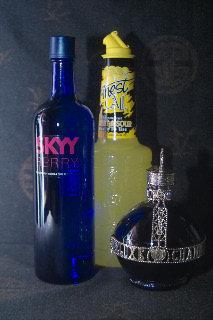 Four Things I Can’t Live Without
Four Things I Can’t Live Without
1. Simple Syrup or Sugar: Provided you have fresh fruit, this one ingredient gives you so much creative power. You can buy it or make it, but don’t leave home without it!
2. Skyy Vodka: The perfect vodka for private events, in my opinion. Goose is so overrated and over-priced… and more importantly, the single most poorly designed spirit bottle in the history of distilled spirits. Absurdly heavy, slippery, unnecessarily tall, and a real pain in the ass to open. I cut myself once a month on that foil. Skyy is proven to be cleaner (less conigers, the impurities that cause hang-overs), is American made, has the best price-point vs. perceived value on the market, and is very Flair friendly. I won’t cater an event if I can’t pour Skyy. That’s just me. And no, I didn’t get one thin dime to write that. That’s just simple fact. Intelligent people pour and drink Skyy. Trendy wanna-bes and uneducated pretentious types who like to waste their money drink Goose. But we’ll save that discussion for another day.
3. Sweet n’ Sour Mix: Funny to me that so many caterers and banquet facilities aren’t accustomed to ordering Sour Mix. I find it to be the second most important juice after Cranberry. If I could stock only two juices, those would be it. And most importantly bring your own Sour Mix because if you leave it up to them, you’re going to get some nasty, cheap generic brand that is almost useless. Personally, I prefer Finest Call. And in case you’re a new reader and wondering… yes, I was singing the praises of Finest Call long, long before they were ever a sponsor of this website or Flair in general. In fact, I’m one of the reasons Finest Call is a sponsor of the Flair community… and that’s because I love their product.
4. Chambord: One tiny little 750ml bottle opens up the color and flavor palate of your parties enormously. It’s my “go to” bottle whenever I need a guaranteed home-run with a an indecisive guest. Everybody likes Chambord, it seems.
How Much to Suggest Ordering
First off, remember from last month… never, ever purchase the order yourself or through your company unless you have a liquor license and liability insurance. Let the client do that. Instead, prepare an exact order with quantities, bottle sizes, brands, etc. for them. There is no secret formula or chart to determine the order. I’ve read such things online and in books and I think they’re funny. Every party is different, and the people who write those books and those charts… don’t know what the hell they’re talking about, to be blunt. So how do you write an order?
Alas, there is no magic formula, no perfect chart, no catch-all rule of thumb. So let’s make some up, shall we? Follow these suggestions and you’ll find yourself in pretty good shape. Add in some of your own common sense and refer back to your interview with the client, and in time, you’ll learn how to suggest orders that are perfect right down to the bottle and the lime.
Step 1: Use your head. If you’ve bartended for even a few months, you should have a pretty good idea how much booze your bar or club goes through in one night as well as roughly how many people you serve. Use this to guesstimate the order for this party, comparing the total event time and guest count to your bar, restaurant, or club.
Step 2: Calculate projections. While not an exact science, calculating your orders will give you a good estimate. From that, you can step back and use some common sense to determine if you’re on the right track. You can calculate so many different ways; go with whatever works best for you. I like to project the total number of drinks I will serve at the event, and then take the order I’ve prepared (Step 1), and see if all the spirits and mixers yield that many drinks. If so, I know I’m in pretty good shape. You can never really know what people are going to take to, unless you do the same party with the same people time and time again. Knowing this takes a lot of pressure off you and calculating projected “sales” will give you some more reassurance.
Step 3: Strip the order. Take out most of the fluff that will likely only add expense to the party, and not a lot of value. Yes, you’d love to have a half case of Cachaca to make Caipirinhas and every flavored vodka on the market. But can you do without it? Of course you can. Rum is a more than adequate stand-in for Cachaca and with a little creativity, some fruit and some simple syrup, you can work around calls for flavored vodkas. You can knock hundreds off the cost of the order this way and that will not go unnoticed, in most cases.
Step 4: Now beef the order back up. Take 25-50% of the savings you just created in the last step and spend it on a little surplus of the basics like Vodka, high-volume mixers, bottled water, beer, etc. The worst thing you can do is run out of items that will make guests say “You’re out of ______????!!!! You’re kidding?!” Running out of basics makes you look like an amateur. Just a couple extra bottles of Vodka can save your ass, believe it.
Step 5: Confirm the order. Go over the order suggestion with the client or event planner. Don’t waste their experience and sometimes firsthand knowledge of the client or party guests. Tell them what you think will do the job and see what they say. They might have forgotten to tell you that the boss drinks bourbon. If you catch it now, you will only look that much smarter when you have plenty of bourbon at the party. And that reminds me… whatever the boss drinks, so will most of his or her kiss-ass, suck-up employees. So order plenty.
Step 6: Have a back-up plan. Make arrangements with the event planner in case you run out of core stock. Have one of their people ready to run to the liquor, ABC, or grocery store before you run out of anything. Usually, you will run out of Vodka, beer, or ice. All three are relatively inexpensive, compared with other things you might need, so my advice is spend an extra $100 on a few extra bottles of vodka, cases of beer, and bags of ice. Even then, have a runner on standby.
Let’s Beat a Dead Horse
There are two things you cannot afford to run out of: cups and ice. Everything else, even vodka, you can work around. But without cups and ice, you’re shut down. Luckily, both are very inexpensive. Project serving 1000 drinks? Order 2000 cups. For ice, I have read numerous suggestions that one pound per person works out well. I have found that 2-3 pounds of ice per person is more accurate for a party of four hours or less. After calculating how many bags that requires, add another 10-20 bags (depending on their size/weight). You still might not have enough. Good news, if you have extra, you’d wasted very little money and cleanup is easy.
What to Expect When You Get There
While the degree of assistance, professionalism, and preparedness you will encounter totally depends on the firm or firms you are contracted by, as a rule: expect nothing because that’s what you get in most cases. You will walk into a half empty room where everybody is scrambling around to set up buffets and banquet tables, lights, candles, and microphone cable. The last thing anybody is going to give a rat’s hairy ass about… is you, the “juggler” as you will probably be called more than once. You’ll be told you’re setup is off in some dark corner somewhere, and you’ll see (if you’re lucky) one or two six-foot banquet tables with about a foot clearance between them where you are supposed to work from. Ah, the joys of being a Flair bartender, lol.
Your order (if it’s there) will probably be in some back room down some hallway and the guy who knows all about it probably already left for the evening. They told you on the phone they “got everything you asked for” but when you arrive, you’ll discover that means they got stuff that kind of sounded like what you wanted, and you’ll just have to deal with it. Those eight bar mats you ordered have become one bar mat. Because I have encountered this at almost every event I have ever been hired to work, I strongly suggest the following two courses of action:
1. Arrive early. Hours earlier than you think you need to be there.
2. Bring everything. Anything you can’t live without, bring yourself.
You know, it’s really actually pretty damn funny when you look back at it. All the absolutely ludicrous situations you have to walk into and make work as a Flair bartender. I know you’ve been there, at least once. (The stories I could tell.) What is important for the purposes of helping you make a living working for yourself, is to realize, that a) nobody cares besides you b) everybody deals with obstacles in their careers and most importantly c) the people that really succeed, are the ones that learn how to smile while they overcome obstacles. So go in with very low expecatations and be preapred to be creative as you overcome all the hurdles put in your way. Whatever you do, don’t bitch and moan to the event staff. It will come back to bite you in the ass.
The people that quickly learn how to turn lemons into lemonade are the ones who get the callbacks and the bigger contracts. It doesn’t matter how good your drinks, Flair, bartending, or menus are… the only questions that really matter are 1) was the client happy? and 2) are you easy to work with? Make sure the person paying for the party likes you and what you bring to the party and make sure the people who are organizing the event enjoy working with you. Everything else is gravy, in most cases. Now that you know this, enjoy the party!
 Performing Shows at Parties and Events
Performing Shows at Parties and Events
My first suggestion to you is more of a warning, lol. Don’t get talked into doing a show without advance notice, proper staging (lighting, space, sound), or without additional pay. Now selling an entire package of beverage catering with working Flair and Flair shows is one thing. But being hired strictly to stand behind a bar and make drinks with working Flair and then agreeing to stop service to perform a full-on exhibition is something different. I advise you to always charge significantly more for separate shows, and here’s a gaggle of reasons why:
1. It adds value to your show. If you just do a show “on the side for free” or worse, agree to flip empties “whenever it’s slow”… you’re devaluing what we all do. You’re also devaluing yourself right there at that event. Look, if your waiter breaks out a deck of cards and says “want to see a card trick?” sure, it’s kind of neat. But if you go to a party knowing that your waiter is a professional magician who will be performing dinner shows, the perceived value you now have for the event (and your excitement level) just shot up. Don’t give away your thunder for free. Also, flipping empties behind the bar might send the wrong message to some guests. They might interpret it as either in poor taste at certain functions, or that you are sacrificing service in order to “show off.” Now I know we all deal with this ignorant attitude at work, but at a private event where you are the business, the entire concept of your company; can you afford to take that risk? Maybe yes, maybe no. But realize the difference between how you bartend at work and how you do it on the road and base your decision on how this perception affects your business instead of on your personal feelings about Flair.
2. It ensures proper staging. This goes back to last month’s Part One where I told you how much more everyone will help you setup when you charge more. If the client is paying extra to have you do a show, and I mean $500, $1000, or $5000 extra for a show… trust me they will give you 100 times more attention and support with staging the show. You will actually get the mats, or enough room to move, or the proper lighting, or the right sound equipment so they can hear your music. If you just “throw it in for free”, you’re going to be flipping in direct competition with the accordion player they hired, somewhere in the back corner with your CD playing in the boombox they borrowed from the kitchen. Good luck with that.
3. It justifies the operational changes you will need to make. Operational what? If you’re going to perform a full-on show; who is going to work behind your bar, serving drinks? You better have an answer for that. If you are getting paid to perform the show, you will be able to plan in a temporary closing of your bar. Or it gives you the budget to hire more staff so you can do both: serve drinks and perform shows. Think through the logistics of the party before you agree to any shows.
4. The client will listen to you, instead of telling you. If you don’t take money for something, people don’t really pay attention. So when you try to tell the client you will perform some shows “when it’s slow” or “four times that night” they will likely hear what they want to, and tell their boss or client something else. If you make them pay for the show or shows, you will be putting the details of the show(s) in writing and now they will pay attention. This will allow you to steer them away from all the silly suggestions they will make. And they will make them, trust me. They will ask you for a 30 minute show. They will ask you to “involve guests” with your shows and yes, they mean involve guests with the actual bottle-flipping. They will ask you to do things that are either dangerous or just plain ill-advised. No offense, but I can’t think of a single Flair bartender on the planet I would want to watch flip bottles for 30 minutes straight. Clients don’t know this. They have no idea what we do and therefore, what they really want. If you make them pay for a show, they will be much more likely to listen to you and trust your professional, expert opinion. The last thing in the world you want, is to walk into an event that has been dictated to you by someone who thinks Flair is spelled f-l-a-r-e.
No matter how you arrange shows during an event, I would suggest keeping them short and sweet. The longest show I’ve ever done was a four-man fully choreographed stage-show complete with multiple costume-changes, individual performances, as well as two-man and four-man routines, dancers, and an Emcee. That was a twenty-minute show. We prepared for it for months. When I do solo shows, I always keep them under five minutes. After that, people get bored. If most of your experience watching or performing shows comes from competitions, you will be in for a rude awakening.
While at private events the crowd will be impressed much more easily, they are not nearly as much of a respectful, captive audience as they are at Flair competitions. If you flip too long, you will lose the crowd. Do two or three 3-4 minute shows instead of planning one 10-minute show. And don’t get talked down from your price because of the duration of the shows. Don’t think selling a 20-minute show will get you four times the fee of selling a 5-minute show. Remember from last month, to sell the unique entertainment value of your Flair, and don’t try to sell yourself in terms of hourly rates, labor, etc. You are an entertainer, not a laborer.
15 Things You Will Forget to Bring If You Don’t Refer to This List
1. Bus Tubs
2. Flashlight
3. Zip Ties
4. Cutting Board and a Big Knife
5. Buckets
6. Bowls
7. Linens
8. Duct Tape
9. Box Cutter
10. Simple Syrup
11. Windex
12. Bar Towels
13. Tupperware
14. Carafes
15. Church Key (Can Punch)
The Top 10 Mistakes to Avoid When You Cater a Private Party
1. Arriving Late. Get there at least three (3) hours early. Besides being the biggest professional taboo I can think of short of working in dirty clothes or smoking behind the bar, being late will set you up for a train wreck of an event. You want to be fully-prepared and staged at least 30 minutes prior to the arrival of the first guest. Chances are 99% you will need 30-60 minutes to handle the missing orders/items and poor planning of the people who hired you. And you will probably want at least 20 minutes or so to test the lights and warm-up. There’s an extra hour, right there. My motto is Plan for the unexpected, expect the worse, and hope for the best. Another thing I always think about, is perception. When a bartender rolls in late and runs around in a panic trying to get ready, red-faced and flustered… what kind of tone does that set for the event, in the minds of the client and everybody else working the party? Instead, when you’re one of the first people on site, and you are casually, confidently, calmly whistling your way through a smooth setup, think about how impressed everybody will be.
2. Not taking a deposit. Do not wait to be paid until the event or afterwards. If you don’t take a significant deposit at the time of booking that includes a cancellation penalty, you are going to get a lot of last minute cancellations. Also, if you wait to be paid until the event, you will be amazed how many times they “forgot the check.” Then you will wait months to be paid, believe it. Be firm and confident with the knowledge that no serious vendor provides any services or guarantees bookings without a deposit, and usually there is a fee/penalty for last-minute cancellations.
3. Not being uber-specific about brands, bottle sizes, mixes, cups, etc. Here’s what happens most times: you tell your direct contact what you need. They tell the client or an intern or a coworker. They send another intern, assistant, or coworker to the store. This is where the real damage occurs. See, people like to “think.” And when they think, without experience or firsthand knowledge, they do dumb things. If you do not DEMAND 750s, I guarantee you, you will get liters or worse, 1.75 jugs of liquor along with a sheepish “Oh, I didn’t think that made a difference” or “Oh, well it was cheaper to buy the bigger bottles and I didn’t think you’d mind.” Try Flairing with a 1.75L jug. Have fun. I would go so far as to make your client paranoid about getting this part of the process correct.
4. Not providing written, specific setup instructions. When you arrive, they will usually have you pinned up against a wall in the back corner somewhere because they have no idea what a Flair bartender does or needs. The people who set up banquets and parties usually have years of experience… with traditional (and often outdated) systems and setups for regular banquet bars. They will revert to what they know and set up for that scenario, which is no good for you, at all. Get there early and be really patient and friendly as you basically rearrange the entire room, putting yourself in the spotlight where you can (and will) shine.
5. Being shy/timid about making them correct their mistakes and move things around. Every once in a while, I get a really cool banquet manager or event planner who feels bad they didn’t set me up properly and they do everything and anything to quickly and fully accommodate my needs. Normally, however, I get some grumpy ass old bastard who hates their job and is stressed out by anything that comes out of my mouth who grumbles and moans if I ask them to do their job properly. I am not shy, at all, about making sure I get what I need. If you let them intimidate or push you around, you will end up with not enough room to Flair, bad lighting, bad sound, and lots of other thorns in your production that will end up making you look bad. Really bad. This is your name, your livelihood on the line. Always try to be patient, polite, and apologetic at first. That will work most times. But if it doesn’t: fuck’em if they have a bad attitude. Bulldoze right over them if you’re getting resistance. Go over their heads. Do what you have to do with an uncooperative event staff to make sure you still can deliver your best. In the end, all that matters is that the person who hired you and the people who hired them, love you and what you provided for their party. Everybody else is secondary. It’s sad to have to say it, but it’s true. You will be forced, at one point in your catering career, to decide if you want to perceived by banquet staff as the nice guy who wasn’t really that good, or the asshole who put on one hell of a show. You know which I’d pick, lol. Remember: 9 times out of 10, the banquet manager who screwed you during set-up has nothing to do with the decision to hire you or bring you back and you’ll probably never see them again. So as much as you might want to play politics, there comes a time when you have to be more than firm, to set yourself up for success. The secret is knowing when you are in one of these no-win situations and minimizing the damage. The more you put in writing, the less of a prick you will have to be. Instead, you can just hand the paperwork to whoever isn’t following it and smile.
6. Setting up right next to “normal” bartenders. I don’t ever do this anymore. Too many negative experiences. You think it’s bad at work when you’re the only one who Flairs? Try being a total stranger to your “coworkers” and doing the same thing. All night long, you will catch the tail end of snide remarks and negative attitudes from the insecure, bitter banquet bartenders. There are always exceptions: bartenders who love what you do and are eager to help you out. But more often than not, you’ll be the outcast. Keep your setup as far as possible from the regular bars and make sure you get prime position. Don’t let them stick you in a corner so you end up serving very few people. That just makes you look overpriced. You want to make as many drinks as possible; you want to entertain everybody.
7. Forgetting equipment and supplies. Make a comprehensive packing list on your computer. Think of everything. Then double-check to make sure you have sufficient quantities of everything for each event. Mark off every item as you pack it. Bring extras. The most common things you will forget or run out of include pour spouts, towels, ice scoops, strainers, store n pours, and a church key.
8. Mats. Nobody ever understands how many mats you really need. They think one or two half-sized kitchen mats are fine. Then they ask the kitchen manager to take all their mats out of the kitchen for the “Flair bartender” to use. That usually goes over real well. Make sure they know exactly how many and what size mats you need. Include this in your contract with the right to walk out without refund if they do not provide them. That will get their attention, trust me. Give them another option as well: carpeting. Most trade shows and special events use carpeting that they bring in and cut, so get your piece to cover concrete, tile, and wood floors. Bar mats are next to impossible to scare up last minute, carpet is usually not that hard.
9. Working without a contract. Big mistake. Spend a couple hundred bucks and have somebody draft you a standard contract that you can modify for each event. Keep it short and easy to read. Don’t think you need a 10-page contract with tons of legalese; a simple one-page “letter of agreement” is more than enough. The real purpose of a contract is not to prevent or prepare for lawsuits, it is to have a clear, written agreement of expectations for both you and your client to refer to. That way, when you disagree about who was supposed to do what… all you have to do is pull out the contract and the matter is settled without an argument.
10. Flairing like it’s Legends or Roadhouse. Big mistake. This is not the place you want to experiment with new Flair. Use your most polished, perfect moves, sequences, tricks, and routines. Dropping, spilling, and breaking at private events is really, really poor form. Especially the more you are paid. Do you think the juggler they hired is going to drop every 10 minutes? They probably won’t drop once their entire show. Remember that 9 out of 10 people have never seen Christian Delpech, Adrianno Marcellino, or Dario Doimo Flair before. They probably haven’t seen anybody Flair for more than a few seconds. Everything and anything you do will impress the pants off of the entire crowd. Dumb it way down and focus on speed and quality of service, showmanship, guest interaction and above all… the drinks.
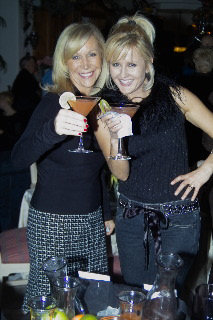 Summary
Summary
Working private events can be both lucrative and creatively satisfying. There’s nothing like having 100% control of your bar and your beverage program, especially when your drinks, service, and Flair are the talk of the party. The money’s not bad either, lol. As much as I’ve tried to scare you away from trying to offer too much, too soon… with experience you will be able to start having a lot of fun with your events, carving out your own little niche. With some patience, practice, and clever marketing, you will be able to make some really good money on the side, doing things your way. And that is priceless, especially if you work somewhere that handcuffs your creativity when it comes to Flair or mixology.
When I set out to share all this information over the past two months, I will openly admit… I had an agenda, and it was this: to stop you starry-eyed bastards from selling us all out for $200 and a free dinner! You think I’m kidding, but I’m not, lol. As long as there are enthusiastic but relatively inexperienced Flair Bartenders out there who think slapping up a webpage and printing some business cards at Kinko’s is all they need to enter the arena of contract bartending, we all lose. Hopefully, if I just described you, this article has given you the tools to pull yourself out of that category, and that is my real goal here: to make you better at what you do. If you become better at it, we all look more professional, earn more respect for our trade, and we all make more money.
Because if you don’t know how to price, sell, promote, prepare, setup, and work a private event, you’re going to get talked into doing it for hundreds even thousands less than you should have, and you’re probably going to end up making tons of mistakes you didn’t have to. Some mistakes are little, some can be huge and devastating. You don’t want that, I don’t want that, and your client definitely does not want that. So I have tried my best to give you tons of free advice on how to attack things a little smarter, so that the value of what we do stays high, and so your parties run a little smoother. If that’s what these last two months of Cut Off has accomplished for you, I’m thrilled.
In return, I ask only this: don’t sell us out. Price-gauging aka low-balling, that is, offering your services at a ridiculously low rate just to make sure you get the gig, hurts you, hurts me, it hurts our industry. If you don’t have the experience to justify proper rates, consider bringing in some heavy-hitters from out-of-town so you can. What you will learn by working one private party with a highly-seasoned pro, will more than pay for itself. So look at the big picture and think of the long-term, and maybe I will see you a the next big event in your own home town.
Until then, my name is Toby. And when I’m not packing, unpacking, packing, and unpacking from private events I’m home on my Macintosh G5 trying to help make the pie bigger, so we can all enjoy a slice. This month, that pie is pumpkin. Mmmm… pumpkin pie. Have a Happy Thanksgiving.
p.s. Unless you are working an event at a dedicated restaurant, nightclub, bar or fully-operational banquet facility with a dish room and racks and racks of glassware, I would strongly urge you to consider using disposable plastic cups. Otherwise you will probably find yourself scrambling for clean glassware one hour into the party and good luck finding someone to be a glassware runner for you once the party has started. Plastic cups come in all sizes, qualities, and shapes. Even better, they are highly portable and light, stackable, and easy to cleanup. With a little practice you will find you can do tons of very cool tricks with lightweight plastics, too. From martini glasses to champagne flutes, plastics can make your life a lot easier and more fun.
Have you ever wanted more time and more help in your...
MANGO MAGIC: Marco Estrada, Brownsville, TX 1 ½ oz Aviation Gin ¾...
ALOE WOK: Olya Sabanina, Saint Petersburg, Russia 1 1/3 oz Aviation Gin...
We have all strived to become better at our craft, or else,...
About the author, Elton Marvin Jr. has worked in the food and...
From starting out picking up a Flairco bottle after watching the movie...
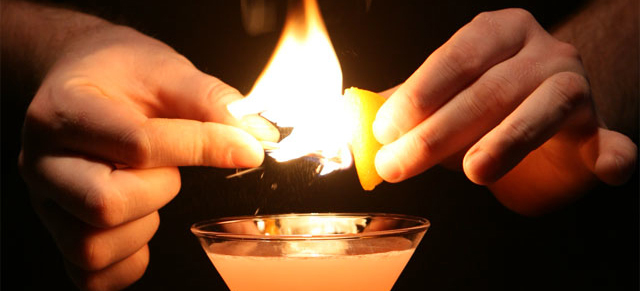
Your cart is empty.
Click “Play” on the video above.
Click “Play” on the video above.
Click “Play” on the video above.

